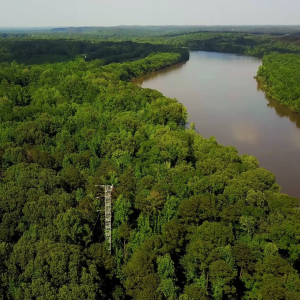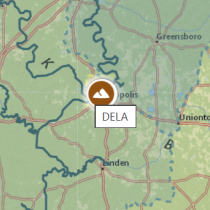NEON Welcomes New STEAC Members!
September 29, 2021
NEON's Science, Technology & Education Advisory Committee (STEAC) has welcomed three new members into the group beginning September 2021!
"We are delighted to have these three accomplished scientists join our STEAC," says Chief Scientist and Observatory Director Paula Mabee. "Drs. Lips, Petruzza, and Serbin join us from the areas of organismal biology, remote sensing, and cyberinfrastructure. We're very happy to have them represent these areas of the scientific community and help us continue to improve NEON operations and outreach."
Dr. Karen Lips
Lips is a professor of Biology at the University of Maryland College Park. She is a field ecologist who studies the effects of global change on animal populations, communities, and ecosystems in temperate and tropical areas. A primary focus of her research is determining the ecological and environmental factors that influence amphibians' response to disease and the cascading effects changes in amphibian biodiversity have on terrestrial and aquatic habitats. She is also interested in the broader impacts of biodiversity loss, including human health and global security and in increasing engagement on environmental issues, promoting scientific leadership, and fostering international scientific collaborations.
Lips is a Fellow of the American Association for the Advancement of Science and of the Ecological Society of America. Additionally, she is a Leopold Leadership Fellow, has served as a Jefferson Science Fellow at the U.S. Department of State, and as an Embassy Science Fellow in Colombia.
Dr. Steve Petruzza
Petruzza is an assistant professor at Utah State University and a research associate at the Scientific Computing and Imaging Institute of the University of Utah. His research focuses on analysis and visualization of large scientific data leveraging high performance and edge computing.
Petruzza has led projects for large scale data analysis and multidisciplinary collaborations with experts in different domains such as materials science, ecology, and neuroscience. He is also part of the NSF CI Compass project, which has been supporting NSF Major Facilities such as NEON, to accelerate and improve their data lifecycle and cyberinfrastructure.
Dr. Shawn Serbin
Serbin is a scientist in the Environmental and Climate Sciences Department at Brookhaven National Laboratory. He is broadly trained in forest ecology, plant physiology, ecosystem science, and remote sensing.
Serbin's research focuses on the use of in-situ observations, multi-scale remote sensing data, and process model-data integration to study terrestrial ecosystem carbon, water, and energy cycling; vegetation dynamics; and land-atmosphere interactions. His research spans several global biomes and leverages a number of tools including spectroscopy and novel quantitative methods, which he uses to effectively scale process knowledge.
--
The role of the STEAC is to provide strategic advice to Battelle, the NEON Chief Scientist and Observatory Director, and NEON program staff on the planning and operation of the Observatory and other relevant programs. Members serve three-year terms and participate in monthly conference calls as needed.
Learn more about the STEAC and about our other advisory groups.

